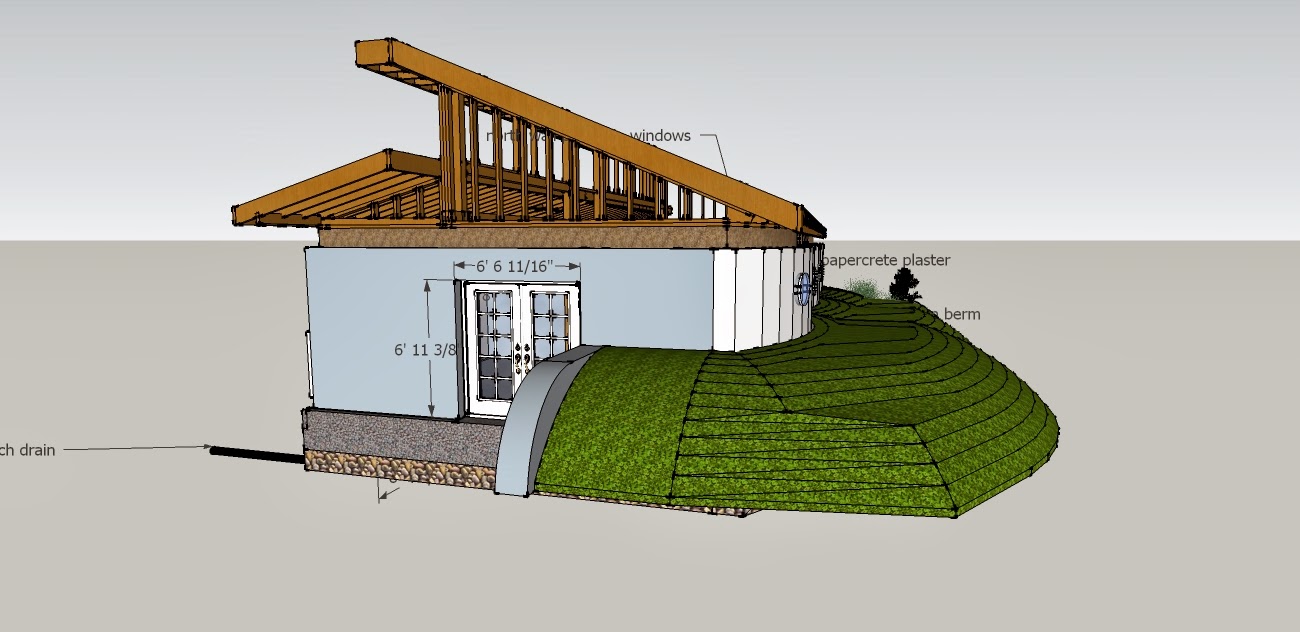

Some energy-saving ideas from the 1970’s are much more viable now, thanks to new products and systems.
Often, good ideas, simply because they’ve been around for a while, are assumed to be less effective, or even obsolete. But many of the energy-saving principles of the solar homes of the Carter era actually have the potential to work even better today. That’s because insulating techniques, window glazings, and even window coverings have improved dramatically.
These techniques are not limited to new home construction. They apply whether you are starting from scratch on a new site, adding an addition, or dropping a modular home onto your lot.
Here’s a look at three “Old School” technologies that make perfect sense for modern construction. For this article, we’ll be looking primarily at cold-weather construction details, although some, such as earth berms and solar PV, have application in hot climates as well.
Earth Berm Upgrade
One of the problems with early attempts at partially buried, split or “bi-level” homes with livable basements was the near inevitability of moisture problems. The guideline has always been to steer water away from the basement, but new products offer a level of fail safe protection that wasn’t there before. The old way was to simply slap a coat of asphalt on concrete below-grade walls, and install a sump hole in the concrete floor of the basement as a backup plan for any seepage. But modern products such as synthetic drainage mats are far more foolproof than a thin layer of asphalt that will degrade over time.

This illustration shows a carefully planned earth berm for a modern home. New technologies offer better long-term moisture-proofing and energy performance. Image: www.themodernnatural.com.
That was then. Building science has improved, and you can now install concrete walls (still with good drainage in mind) that are protected by solid backup systems to keep water out for the life of the home. For an overview, here’s a guide designed for professional builders (See “Water Control Layer,” Section 1.2, page 12) that explains how to install and use high-tech drainage mats with rigid foam insulation to create durable, waterproof basement walls.
By combining this insulating technique with the natural insulating qualities of earth berming, you can save big bucks on a home’s long-term energy usage. As an interesting side note, earth berming also makes a very effective sound barrier. A field study back in 2011 found that earth bermed walls worked better than concrete at reducing noise pollution, primarily because the earth walls can be built at an angle that deflects noise, whereas concrete walls tend to be vertical.
Passive Solar: New Tools
When passive solar first hit its niche in the 1970’s, the best option for overall energy performance was dual glazing and manual, rigid foam panels. Sure, you could get some great heat gain during the day, but unless you swung down the foam panels at night, you would lose all the gained heat, for a net energy loss. That’s asking a lot of consistent behavior from creatures not known for consistency (humans).
Technology solved this problem with low-e glazing. Equip that window-wall with low-e double-glazed windows, and even if you have no window coverings (in some cold climates), you end up with an energy wash. No energy gain, but you’ve hit neutral. This is where new technologies come in.
Three advances (below), especially when used in concert in a well insulated house, greatly increase the energy-efficiency potential of passive solar. Achieving Passive House level wall R-values can be achieved with conventional materials. At the REACH Community Development Orchards at Orenco project, for example, here’s how they hit that mark:
“While typical walls usually have 6″ stud cavities filled with batt insulation, the walls at Orchards will have 10″ stud cavities filled with blown-in fiberglass insulation as well as a layer of exterior rigid insulation.”
Passive House experts also recommend specific window frame insulating values and other details. But for simplicity, focus first on the big three:
Window Sealing Systems. Put your hand next to a window in an old house. If you feel a draft, chances are it’s coming from the area around the window, not the glass itself. We have a much better sense of the importance of air sealing around windows, and new products such as sealing tapes that make it easy to get a perfect seal.
Advanced Glazing. Newer windows, with argon-filled cavities and/or triple-glazings shift the energy equation. Now you’re actually retaining more solar heating than you’re losing over the cold winter nights. The next step seals the deal.
Automated, Insulated Blinds. Few of us have a lifestyle or the discipline to lower and close window insulation twice a day, every day, to save energy. But affordable automated systems are now available that take over this chore. With these technologies combined, passive solar window walls and south orientation look a lot more promising for modern homes and additions.
Roof-Top PV: Blending In
Some people don’t like the look of traditional photovoltaic panels. Their objections don’t have to be a deal breaker. Solar now comes in many styles that blend with roofing. These products, called Building Integrated Photovoltaics (BIPV) used to be reserved for commercial projects, but they’re finding a growing market among homeowners.
Low PV Profile. Building integrated solar panels blend in better with traditional rooflines in the neighborhood. Image: Flickr (Creative Commons).
BIPVs are fairly new in the residential sector, and there are a few special things to consider when putting one on a traditionally built truss-framed roof.
Don’t let old ideas about passive solar, earth-bermed and rooftop solar turn you off to these time-tested, better-than-ever technologies. Add the right modern ingredients. And you can put them to work saving money over the long lifespan of your next home or addition.